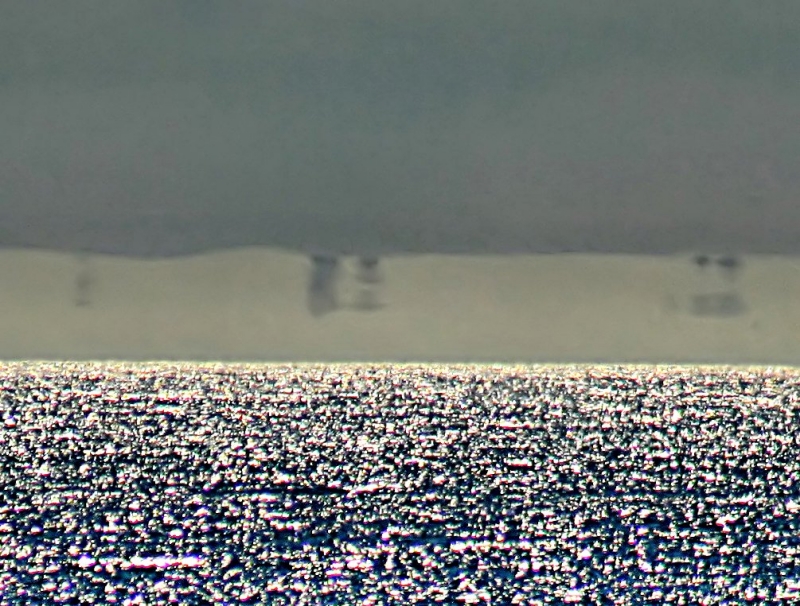The Deceiving Fairy - The Fata Morgana
The Fata Morgana
This is work-in-progress and will form part of my book Delivering the Impossible

By Brocken Inaglory, CC BY-SA 3.0
It’s a strange name. It’s the Italian for the “Fairy Morgana” who is the witch in the Arthurian legend, and it’s the name that sailors gave to a mirage. Being sailors, the thing that they saw on the very horizon, when they’d been a long time out at sea, was land. But the term Fata Morgana can also refer to the illusion of water, again in the very far distance for those who are travelling across the desert.
It’s perhaps fitting, given our current investigation into the symmetric, that the physical explanation for why Fatae Morganae occur involves reflection. In certain atmospheric conditions the sand of the desert reflects the sky, or because the change of the refractive index of the air due to the heat, we see “resting on the land” the sky which is in fact just beyond the horizon.
Similarly, in the ocean the impression of land on the very horizon is the result of sea which is just over the horizon being reflected and refracted in the air and hence appearing to rear up out of the sea, as land would.
It is perhaps instructive then that one way of detecting such a fata morgana mirage, or one way of at least suspecting that something very far away on the horizon is maybe not quite what it seems, is symmetry. If something is very far away and perfectly symmetrical, there is a strong chance that it doesn’t exist.
Of course what makes the fata morgana particularly cruel for the sailors who have been too long out at sea and the thirsty desert travellers is that the thing on the horizon seems to be just what they need. That they can see, vaguely, on the horizon, just out of reach, the thing that they desperately need, that just might save their life, is certainly a powerful motivation for moving towards the it. Even though sailing towards the fata morgana maybe be sailing or walking in precisely the wrong direction, or even, given the movement of the sun and the vagaries of the atmosphere, travelling in circles.
One might ask what this has to do with us? We’re not in the middle of a desert. We’re on dry land. But of course, as I’m sure you’ve noticed that fata morgana are all around us. Rather than the physical symmetry of a reflection, they have the logical symmetry that Ignacio Matte-Blanco described. They use the words “same”, “all”, “every”, “completely”, “totally”.
Just as with the physical fatae morganae that deceives desert travellers, their very nature means that it is impossible to inspect them up close. When you get too near them, they disappear - or reappear again somewhere in the distance.
But just as with physical fatae morganae out there in the wild, wild world, we wanderers are powerfully motivated to follow fatae morganae, even if following them results in us being diverted from our paths, or going round in circles.
- “A computer on every desktop”
- “Everything you need under one roof”
- “A government of the people by the people for the people.”
- “All are equal before the law”
- “No child left behind”
- “Completely safe”
- “Totally secure”
- “Risk free”
- “Totally compliant”
Once you start looking for fatae morganae they are visible everywhere. And once you have an idea of how not only physical fatae morganae are formed, but also how logical fata morgana are formed, you start to wonder at the power they have have over us as human beings and the dangers that we face when we pursue them.